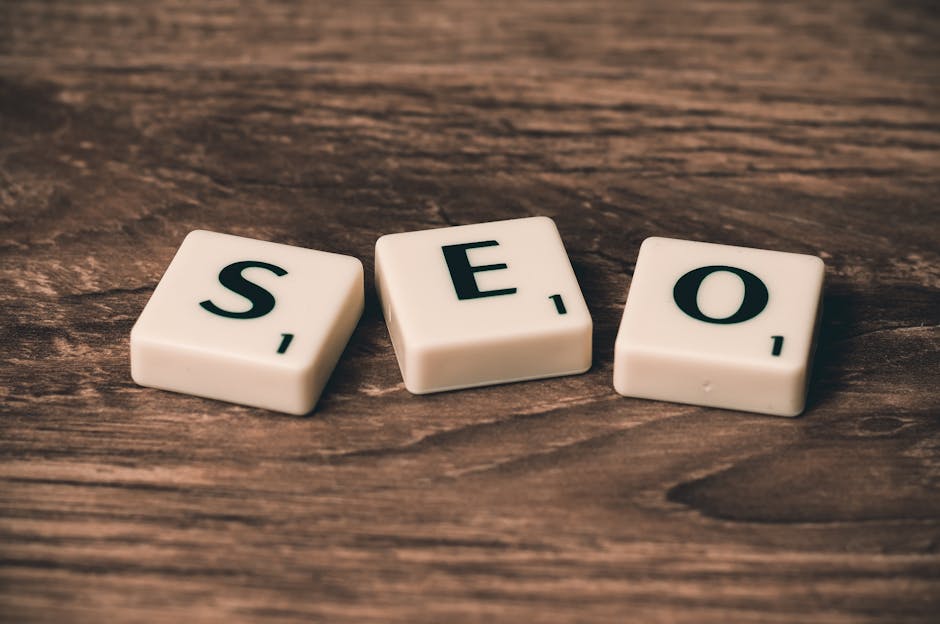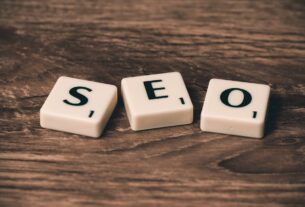Table of Contents
Did you know that Shopify stores with strong SEO can see up to a 2x increase in revenue? Many Shopify store owners struggle to get their products seen in search results, leading to missed sales and potential customers. This blog post is your ultimate guide to mastering search engine optimization specifically for your Shopify store in 2025. Forget outdated tactics, we’re diving deep into what works now.
Understanding the Basics of Shopify SEO
First, let’s break down what SEO really means for your Shopify store. It’s all about making your website more visible to search engines like Google, so when people search for products like yours, your store shows up higher in the results. Think of it as making your store the most attractive and easy-to-find shop on a very crowded digital street.
Keyword Research for Shopify: Finding the Right Terms
The foundation of any successful SEO strategy is keyword research. You need to know what your potential customers are searching for.
Brainstorm: Start by listing all the words and phrases people might use to find your products. Imagine you sell handmade candles – your list might include “handmade candles,” “soy wax candles,” “scented candles online,” etc.
Use Keyword Research Tools: Tools like Google Keyword Planner, Semrush, and Ahrefs can help you find related keywords, see how often they’re searched, and understand how competitive they are.
Analyze Your Competitors: See what keywords your competitors are targeting. This can give you valuable insights into what’s working in your industry.
I remember when I first started working with a Shopify client who sold organic baby clothes. They were targeting very broad keywords like “baby clothes.” After some keyword research, we discovered that “organic cotton baby rompers” and “eco-friendly baby pajamas” had much less competition and a decent search volume. Targeting those long-tail keywords significantly improved their rankings and drove more targeted traffic to their store.
Optimizing Product Pages: Making Them Search Engine Friendly
Your product pages are your storefronts. They need to be optimized to attract both search engines and customers.
Compelling Product Titles: Use your primary keyword in your product title, but keep it natural and descriptive. For example, instead of just “Candle,” try “Lavender Scented Soy Wax Candle – Hand Poured.”
Detailed Product Descriptions: Write unique and engaging descriptions that highlight the benefits of your products. Include relevant keywords naturally throughout the text. Don’t just copy and paste the manufacturer’s description – personalize it!
High-Quality Images with Alt Text: Use clear, high-resolution images of your products. Alt text is crucial – it describes the image to search engines and helps with accessibility. Use relevant keywords in your alt text. For instance, for a picture of a blue baby blanket, your alt text could be “Soft blue knitted baby blanket made from organic cotton.”
Optimize URL Structures: Keep your URLs short, descriptive, and include your primary keyword. For example, yourstore.com/products/lavender-soy-candle is better than yourstore.com/products/product123.
Optimizing Meta Descriptions: Enticing Clicks from Search Results
Meta descriptions are the short snippets of text that appear under your page title in search results. They don’t directly impact rankings, but they do influence click-through rates.
Write Compelling Copy: Think of your meta description as an ad for your product. Highlight the key benefits and create a sense of urgency.
Include a Call to Action: Encourage people to click on your link. Use phrases like “Shop Now,” “Learn More,” or “Get Yours Today.”
Keep it Concise: Meta descriptions should be around 150-160 characters.
Building High-Quality Backlinks: Boosting Your Store’s Authority
Backlinks are links from other websites to your Shopify store. They’re like votes of confidence from other websites, signaling to search engines that your site is trustworthy and valuable.
Create Valuable Content: The best way to earn backlinks is to create high-quality content that other websites will want to link to. This could be blog posts, guides, infographics, or videos.
Guest Blogging: Write guest posts for other websites in your niche and include a link back to your Shopify store.
Broken Link Building: Find broken links on other websites and offer to replace them with a link to your relevant content.
For instance, creating a detailed guide about “Choosing the Right Candle for Your Home” and promoting it to interior design blogs could earn you some valuable backlinks.
Technical SEO for Shopify: Ensuring a Smooth User Experience
Technical SEO focuses on making sure your website is easy for search engines to crawl and index.
Mobile Optimization: Ensure your Shopify store is mobile-friendly. Most people search on their phones, so a mobile-unfriendly website will be penalized.
Site Speed: Optimize your website’s loading speed. Slow websites frustrate users and are penalized by search engines. Use tools like Google PageSpeed Insights to identify areas for improvement.
Schema Markup: Implement schema markup to provide search engines with more information about your products and content. This can help you earn rich snippets in search results, making your listings more appealing.
Clean URL Structure: Maintain a clear and logical URL structure for your website. This makes it easier for search engines to crawl and understand your site.
You can learn more about the impact of site speed on user experience and SEO from Google’s own resources about web vitals. Additionally, analyzing technical SEO is just as important as optimizing your backlinks. You can do that using tools like Ahrefs Site Audit.
Common Shopify SEO Mistakes to Avoid
Ignoring Mobile Optimization: In today’s mobile-first world, neglecting mobile optimization is a critical error that can severely hinder user experience and SEO performance.
Duplicate Content: Avoid using the same content on multiple pages. This can confuse search engines and dilute your rankings.
Ignoring Analytics: Not tracking your SEO performance is like driving without a map. Use Google Analytics to monitor your traffic, rankings, and conversions so you can see what’s working and what’s not.
Neglecting Image Optimization: Failing to optimize images can lead to slower loading times and missed SEO opportunities, as search engines cannot fully understand the content of visual elements without proper alt text and optimization.
Essential Tools for Shopify SEO
Google Analytics: Track your website traffic and conversions.
Google Search Console: Monitor your website’s performance in Google search results.
Semrush: A comprehensive SEO tool for keyword research, competitor analysis, and site auditing.
Ahrefs: Another powerful SEO tool with similar features to Semrush.
PageSpeed Insights: Analyze your website’s loading speed and identify areas for improvement.
Expert Insights: Staying Ahead of the Curve
SEO is constantly evolving. Here are some expert insights to keep in mind:
Focus on User Experience: Google is increasingly prioritizing websites that provide a great user experience. Make sure your website is easy to navigate, fast-loading, and visually appealing.
Prioritize Mobile-First Indexing: With the majority of users browsing on mobile devices, ensure your website is fully optimized for mobile. This includes responsive design, fast loading times on mobile networks, and a user-friendly mobile interface.
Content is Still King: High-quality, informative, and engaging content is still the cornerstone of any successful SEO strategy.
E-A-T (Expertise, Authoritativeness, Trustworthiness): Google values websites that demonstrate expertise, authoritativeness, and trustworthiness. Build your brand’s reputation by creating high-quality content and earning backlinks from reputable websites.
Key TakeawaysKeyword research is crucial for targeting the right audience.
Optimize your product pages with compelling titles, descriptions, and images.
Build high-quality backlinks to boost your store’s authority.
Focus on technical SEO to ensure a smooth user experience.
Track your SEO performance with Google Analytics.
FAQ: Addressing Common Shopify SEO Questions
Q: How do I add keywords to my Shopify store?
A: You can add keywords to your Shopify store by including them naturally in your product titles, descriptions, meta descriptions, alt text for images, and throughout your website content. Keyword research tools can help you identify the most relevant and high-traffic keywords for your niche.
Q: How do I improve my Shopify store’s ranking on Google?
A: To improve your Shopify store’s ranking on Google, focus on optimizing your website for relevant keywords, building high-quality backlinks, ensuring a mobile-friendly design, improving site speed, and creating valuable content. SEO is a continuous process, so consistent effort is key.
Q: What are the most important SEO factors for Shopify?
A: The most important SEO factors for Shopify include keyword research, on-page optimization (titles, descriptions, images), link building, technical SEO (site speed, mobile optimization), and user experience.
Q: How often should I update my Shopify SEO?
A: SEO for Shopify should be an ongoing process. Regularly update your product pages with fresh content, monitor your keyword rankings, and adjust your strategy as needed. Aim to review and update your SEO strategy at least quarterly.
Recommendations
Mastering SEO for your Shopify store is a journey, not a destination. The strategies outlined above are proven to drive traffic, increase conversions, and boost your overall online presence. Start with the basics, like keyword research and product page optimization, and then gradually move on to more advanced techniques like link building and technical SEO.
Now, take action! Start optimizing your Shopify store for SEO today. Conduct keyword research, update your product descriptions, and optimize your images. You can also visit reliable websites to implement your knowledge of SEO. For example, you can visit websites like Moz that have great resources about search engine optimization.
Remember, consistent effort and a focus on user experience are the keys to SEO success. By following these steps, you’ll be well on your way to dominating the search results and growing your Shopify business.



